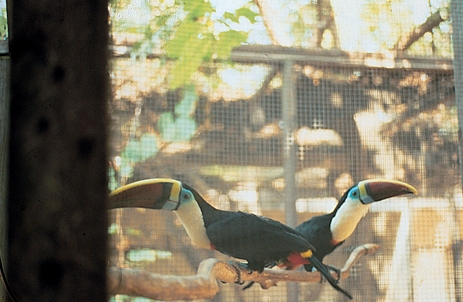Difference between revisions of "Avian Medicine Q&A 02"
Jump to navigation
Jump to search
| Line 3: | Line 3: | ||
|- | |- | ||
| align="center" | [[File:Manson_logo.gif|90px|Mansonlogo]] | | align="center" | [[File:Manson_logo.gif|90px|Mansonlogo]] | ||
| − | | align="left" | This question was provided by [[:Category:Manson|Manson Publishing]] as part of the [[OVAL Project]]. See more [[Category: Avian Medicine Q&A|Avian Medicine questions]] | + | | align="left" | This question was provided by [[:Category:Manson|Manson Publishing]] as part of the [[OVAL Project]]. See more [[:Category: Avian Medicine Q&A|Avian Medicine questions]] |
|} | |} | ||
<br><br><br> | <br><br><br> | ||
Revision as of 21:28, 2 August 2011
| This question was provided by Manson Publishing as part of the OVAL Project. See more Avian Medicine questions |
An eight-year-old red-breasted toucan (Ramphastos tucanus) was presented for a post-mortem. The bird had been in the collection for 5 years; it was an aviary bird whose mate appeared healthy. The bird was clinically normal the previous day. On external examination, no abnormalities were noted and the body weight was considered good at 435g.
| Question | Answer | Article | |
| What is the most likely diagnosis? | The most likely diagnosis is iron storage disease (haemochromatosis).
Cellular damage may or may not result from excessive iron deposition. Organ dysfunction and clinical illness or death may be the result. It is common to have a bird that appears clinically healthy prior to acute death. |
[[|Link to Article]] | |
| What are the most likely gross postmortem findings? | Hepatomegaly (often with a definite bronzed to bluish hue). Other organs are generally unremarkable.
|
[[|Link to Article]] | |
| What one specific tissue would be the most likely to demonstrate the cause of death? | The liver is the predominant and frequently the only organ to be affected. Iron deposition can occasionally be noted in the spleen, kidney, lung, pancreas and intestine.
|
[[|Link to Article]] | |
| What other tissues might demonstrate characteristic changes in the bird? | Only rarely will iron pigment be identified in tissues other than the liver but these could include kidney, pancreas, intestine and lung, in that order of decreasing frequency of involvement.
|
[[|Link to Article]] | |
